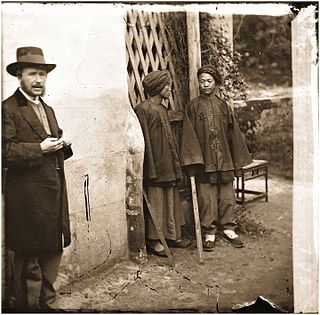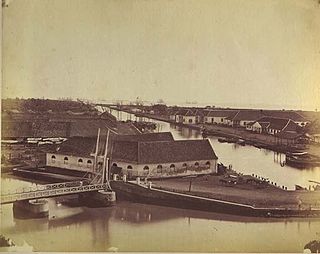 W
WKassian Cephas or Kassian Céphas was a Javanese photographer of the court of the Yogyakarta Sultanate. He was the first indigenous person from Indonesia to become a professional photographer and was trained at the request of Sultan Hamengkubuwana VI. After becoming a court photographer in as early 1871, he began working on portrait photography for members of the royal family, as well as documentary work for the Dutch Archaeological Union. Cephas was recognized for his contributions to preserving Java's cultural heritage through membership in the Royal Netherlands Institute of Southeast Asian and Caribbean Studies and an honorary gold medal of the Order of Orange-Nassau. Cephas and his wife Dina Rakijah raised four children. Their eldest son Sem Cephas continued the family's photography business until his own death in 1918.
 W
WKristen Feilberg or Christen Schjellerup Feilberg (1839–1919) was an early Danish photographer who is known mainly for his images captured far beyond the borders of Denmark. From the 1860s until the 1890s, Feilberg participated in expeditions to Sumatra, Singapore, and Penang. In 1867, he exhibited photos at the Paris World Exposition and around 1870 he joined an expedition to the Batak lands of North Sumatra with the Dutch explorer C. de Haan from which he returned with 45 successful "photogrammes".
 W
WCharles J. Kleingrothe, born Carl Josef Kleingrothe or Klein-Grothe, known as C. J. Kleingrothe was a German photographer who since 1889 (?) had a studio in Medan, Sumatra at the end of the 19th century and early 20th century. In 1891 (?) he partnered with the Swedish photographer H. Stafhell for ten years and photographed the landscapes and architecture as well as portraits. In 1901, the partnership ended and in 1902 Kleingrothe opened a studio on Kesawan street in downtown Medan and photographed agricultural subjects including tobacco, coffee, tea, rubber and palm oil cultivation, administration and transport.
 W
WOhannes Kurkdjian was a photographer based in Yerevan, Tiflis, Singapore and then Surabaya during the Dutch East Indies era.
 W
WChristiaan Benjamin Nieuwenhuis, known as C.B. Nieuwenhuis, was a photographer in the Dutch East Indies.
 W
WCarl Julius Herman Salzwedel was a photographer in Java, Dutch East Indies during the late 19th century. He photographed people and architectural subjects. In the 1870s he partnered with Isidore van Kinsbergen at a portrait studio in Surabaya. Salzwedel then established his own successful studio in the city in 1879. Along with Charls & Van Es & Co (1884–1912) and O. Kurkdjian & Co (1888–1936), it was one of the best known photography studios in the city.
 W
WWalter Spies was a Russian-born German primitivist painter, composer, musicologist, and curator. In 1923 he moved to Java, Indonesia. He lived in Yogyakarta and then in Ubud, Bali starting from 1927. He is often credited with attracting the attention of Western cultural figures to Balinese culture and art in the 1930s and he influenced the direction of Balinese art and Balinese drama.
 W
WJohn Thomson was a pioneering Scottish photographer, geographer, and traveller. He was one of the first photographers to travel to the Far East, documenting the people, landscapes and artefacts of eastern cultures. Upon returning home, his work among the street people of London cemented his reputation, and is regarded as a classic instance of social documentary which laid the foundations for photojournalism. He went on to become a portrait photographer of High Society in Mayfair, gaining the Royal Warrant in 1881.
 W
WHendrik Veen was a prolific photographer in the Dutch East Indies. He photographed ethnographic shots of locals, landscapes, architecture, landscapes and botanical subjects. His work included a series of photos of the temples in Buleleng.
 W
WThilly Weissenborn was the first professional woman photographer of the former Dutch East Indies and one of the few photographers working in the early 20th century in the area who were Indonesian born. Her works were widely used to expand the newly developed tourism industry of the East Indies.
 W
WWalter Bentley Woodbury was an inventor and pioneering English photographer. He was one of the earliest photographers in Australia and the Dutch East Indies. He also patented numerous inventions relating to various aspects of photography, his best-known innovation being the woodburytype photomechanical process.